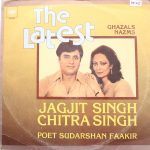Vinyl Records
Product Categories
LP (long playing) is an analogue sound storage medium in the form of a disc with an inscribed, modulated spiral groove. LP records are circular disks originally made of Shellac (typically composed of about one-third shellac and about two-thirds mineral filler, which meant finely pulverized rock, an admixture of cotton fibers to add tensile strength, carbon black for colour, and a very small amount of a lubricant to facilitate mould release during manufacture) later changing to polyvinyl chloride (PVC) with grooves cut into them. These grooves are physical representations of the audio waveforms of the original recording, hence music lovers swear by them. In essence you’re getting the most pure version of that recording you can possibly get in form of Gramophone records. The process of cutting a record onto LP from the original master recording doesn’t leave out any part of the sound, and at the same time the way that the sound is picked up by the turntable’s needle brings the sound characteristic warmth. LP records are generally described by their diameter in inches (12”, 10”, 7”), the rotational speed in rpm at which they are played (162⁄3, 332⁄3, 45, 78), and their time capacity resulting from a combination of those parameters (LP – long playing 332⁄3 rpm, SP – 78 rpm single, EP – 12-inch single or extended play, 33 or 45 rpm); their reproductive quality and the number of audio channels provided (mono, stereo, quad, etc.).






